Remember the game “Duck, duck, goose?”
That’s how winter on the Chesapeake Bay feels; lots of ducks, geese, and scoters overwinter here. Their beauty can be found in abundance along the Eastern Shore and on many of the creeks of the Western Shore. Here are five birds to look for:
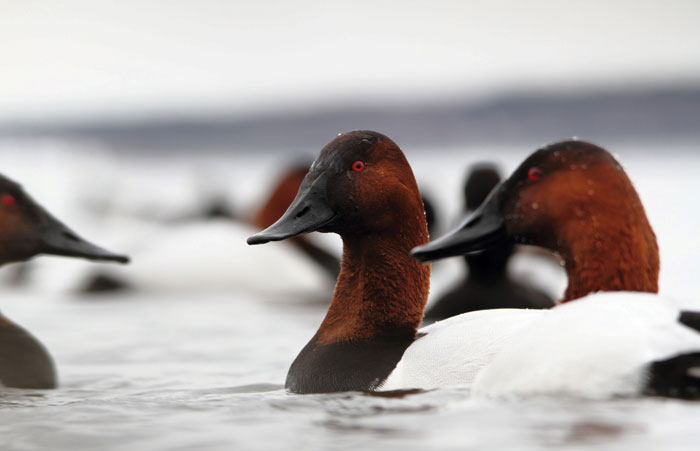
Canvasback
Canvasbacks reside on the Bay or in creeks throughout the winter. They often congregate in large flocks with other species of ducks. Luckily, canvasbacks are relatively easy to identify. Like many species of ducks, canvasbacks are sexually dimorphic, meaning that male and female birds look very different. Male canvasbacks have a striking white back and flanks, a black breast, and a reddish-brown neck and head that grows darker toward the black bill. Males dazzle with a brilliant red eye. Females have a gray back with brown splotches and a brown breast. The head and neck are brown to light brown. All canvasbacks share a distinctive shape with an angled head and fairly thick neck.
While canvasbacks spend their winters in the relatively warm Chesapeake, they breed in the northern Midwest, Canada, and Alaska. Interestingly, female canvasbacks often return to the spot where they were born or previously nested. Canvasbacks will often swim and dive underwater for their food. They usually eat submerged vegetation, but sometimes eat snails and clams. Canvasbacks are a popular duck to hunt.
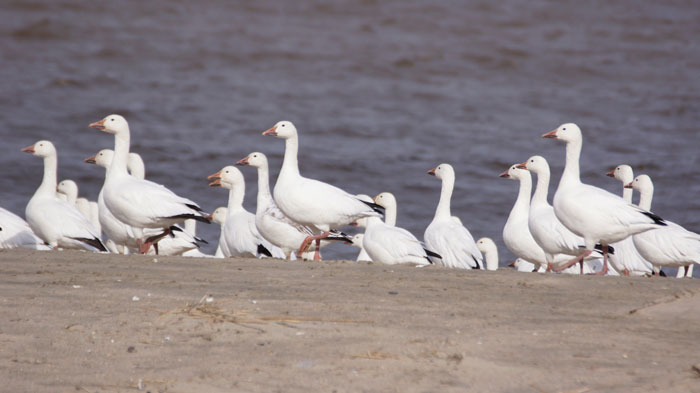
Snow Goose
While snow geese are primarily found on the Eastern Shore in the winter, smaller numbers also make their home on the Western Shore. Flocks on the Eastern Shore have sometimes numbered in the tens of thousands, with the highest count in Maryland topping out at 130,000 snow geese.
Snow geese have a distinct look. Most birds are white with black wing tips visible in flight. A less common variant is dark bluish-purple with a white head. Snow geese also look very similar to the smaller, but much less common, Ross’s goose. Another northern breeder, snow geese pass their winters gleaning leftover grain from vacant farm fields.
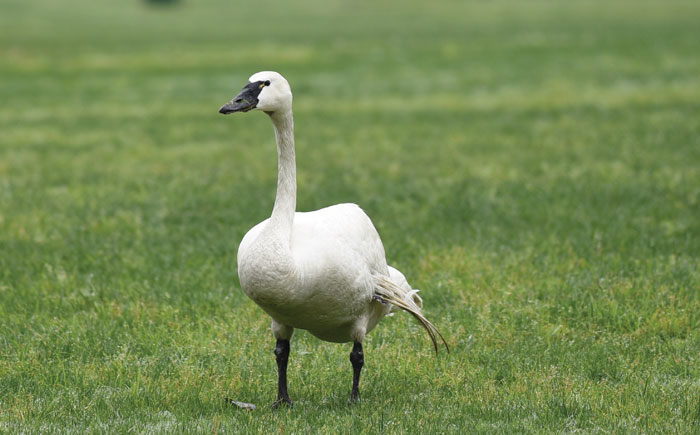
Tundra Swan
Tundra swans are the most commonly found swan in the Chesapeake region during the winter months. Their large size, white feathers, graceful shape, and large black bill cause them to stand out. Tundra swans distinguish themselves easily from another swan on the Bay, the mute swan. Mute swans have an orange bill with a black knob on it. Looking closely at a tundra swan reveals a yellow spot at the base of its black bill.
Tundra swans eat underwater vegetation as well as wasted grain and other crops on land. Following winter, tundra swans head for their breeding grounds in northern Canada and Alaska, where they typically nest near the water.
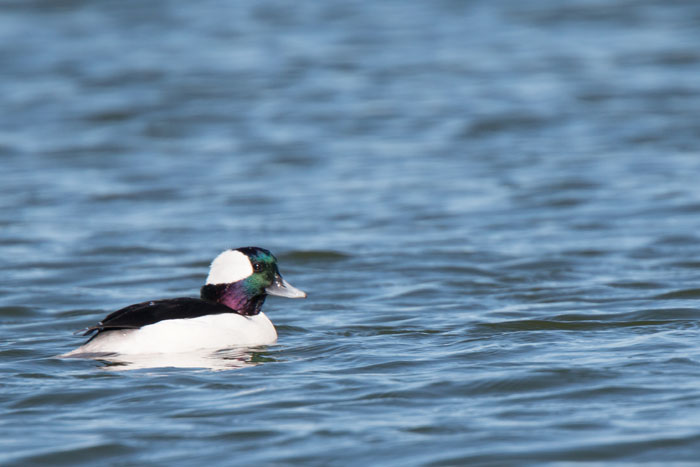
Bufflehead
Buffleheads are small, yet beautiful ducks. Male buffleheads have an iridescent greenish-purple head with a white triangle cut out at the back. They have a dark greenish back and a white breast and flanks. Female and immature buffleheads are largely brown with a richer brown head and back and grayish-brown breast and flanks. They have a small white cheek patch. Both male and female buffleheads have gray bills.
Buffleheads breed near water in the boreal forests of Canada and Alaska and often build nests in cavities in trees. Buffleheads feed by diving underwater and usually eat animal matter such as mollusks, crustaceans, and insect larvae.
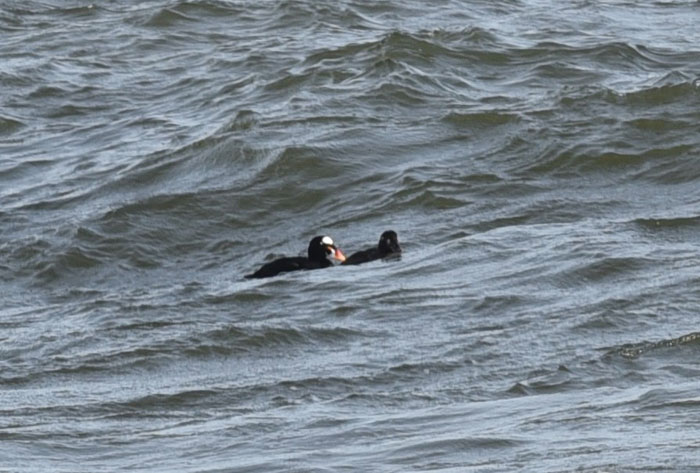
Surf Scoter
Surf scoters are rather strange-looking ducks. Males are mostly black, but have a white patch down the back of the head and neck and on the forehead. They also have a white eye. Surf scoters have a large, wedge-shaped bill. On males the bill is orange with white surrounding a black patch at the base. On females the bill is dark brown just like the rest of the bird. Females have a small white patch in front of the eye, behind the eye, and on the neck. The amount of white varies, especially between young females and adults. Young males are typically brown, but often have a dark face and are beginning to show the orange bill.
As with many other winter feathered residents, surf scoters breed in northern Canada or Alaska. They nest on the ground, either in boreal forests or in the tundra, and they must breed near some kind of water source. They usually eat mollusks, especially mussels, and they also eat fish eggs and invertebrates. They dive for their food, sometimes diving more than 30 feet for dinner.
Knowing a few common winter birds can spice up a cold day on the water, or it can give a reason to go explore a new area by land.
by Hannes Leonard




